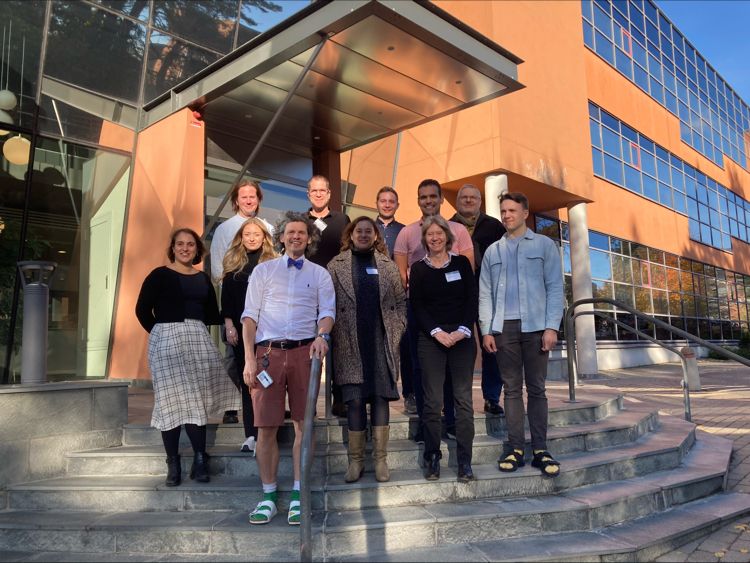Recently took place at Mycronic, in Sweden, the kick-off meeting of the B-BRIGHTER project. Members of all partner institutions participated to lay the first stone of this exciting bioprinting project.

B-BRIGHTER (Better bioprinting by light sheet lithography: engineering complex tissues with high resolution at high speed) project is a EIC Transition project funded by the EU and coordinated by Dr. Gustaf Märtensson and his team at Mycronic, a global supplier of high precision production of electronics technology and equipment. B-BRIGHTER is the natural continuation of the EU project BRIGHTER, ended last December, and it aims to bring the new bioprinting technology closer to the market, being naturally more oriented to the industry and investors.
Project members meet last 19th of October in Täby, Sweden, to discuss about their role and responsibilities in the project, and about its functioning, including the main production and research lines. They also defined the work plan for the following months and the near future actions inside each work package.
B-BRIGHTER at a glance
B-BRIGHTER will develop a novel bioprinting technology able to produce engineered tissues with high spatial resolution at high printing speed using an original top-down lithography approach. The project has the objective of establishing a business case for the light-based bioprinter.
In contrast with current bottom up, layer-by-layer bioprinting methods, B-BRIGHTER aims at ultrahigh-speed digital light-sheet illumination strategy to selectively photo-crosslink cell-laden hydrogels mimicking specific tissues, in confined voxels and produce three-dimensional complex geometries. For this, researchers will develop a top-down lithography method that will enable adjusting the spatial structure and the stiffness with an unprecedented resolution to create the same heterogeneous microstructures that cells find in natural tissues.
As a proof-of-concept, researchers will engineer three complex barrier tissues models: skin, cornea and gut. B-BRIGHTER technology will enable the bioprinting of key anatomical microfeatures of tissue such as invaginations, evaginations or wavy morphologies. It will also incorporate hollow vascular structures while maintaining tissue mechanical integrity without the need of additional sacrificial material
The B-BRIGHTER consortium (the same as in BRIGHTER) is composed by: Mycronic, as coordinator; the Institute for Bioengineering of Catalonia (IBEC); the Buchmann Institute for Molecular Life Sciences (BMLS) of the Goethe University Frankfurt (GUF); the Technion–Israel Institute of Technology and the company Cellendes.
